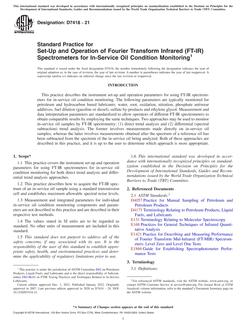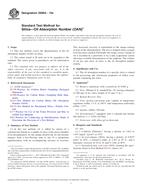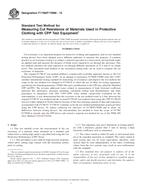1.1 PurposeThe purpose of this guide is to define good commercial and customary practice in the United States of America for conducting a baseline survey for readily observable mold and conditions conducive to mold in a commercial building related to a commercial real estate transaction by conducting: a walk-through survey, document reviews, and interviews as outlined within this guide. This guide is intended to identify observable mold and physical deficiencies conducive to mold as a result of moisture and water infiltration through the commercial buildings envelope or substructure, or generated within the building as a result of processes or mechanical systems, excluding de minimis observable mold and physical deficiencies conducive to mold. This guide is to allow a user to assess the potential need for further assessment or other actions that may be appropriate that are beyond the scope of this guide. For purposes of this guide, the acronym “BSP” or “Baseline Survey Process” is used interchangeably with this guides full title.
1.2 Purpose LimitationsWhile a BSP may be used to survey for readily identifiable mold and physical deficiencies conducive to mold, the BSP is not designed to serve as comprehensive survey for the presence of observable mold and physical deficiencies conducive to mold in all or most areas in a commercial building. It is not intended to reduce the risk of the presence of observable mold and physical deficiencies conducive to mold nor is it to eliminate the risk that observable mold and physical deficiencies conducive to mold may pose to the building or its occupants.
1.3 Considerations Beyond This Scope The use of this guide is strictly limited to the scope set forth in this section. Section of this guide identifies, for informational purposes, certain physical conditions (not an all-inclusive list) that may exist at a property and certain activities or procedures (not an all-inclusive list) that are beyond the scope of this guide but may warrant consideration by parties to a commercial real estate transaction. The need to investigate any such conditions in the consultants scope of services should be evaluated based upon, among other factors, the nature of the property and the reason for conducting the BSP. The scope of such further investigation or testing services should be agreed upon between the user and the consultant as additional services, which are beyond the scope of this guide, prior to initiation of the BSP process. The responsibility to initiate work beyond the scope of this guide lies with the user.
1.3.1 Sampling for mold growth is a non-scope consideration under this guide. As noted by EPA 402-K-01-001, sampling cannot be used to assess whether a commercial building complies with federal standards, since no EPA or other federal standards or Threshold Limit Values (TLVs) have been established for mold spores. And, sampling would only produce results reflecting a specific moment in time in the best case and could produce inaccurate or misleading results in the worst case.
1.4 Organization of the GuideThis guide has 13 sections and three appendices. Section defines the Scope. Section is Referenced Documents. Section is Terminology. Section defines the Significance and Use of this guide. Section describes User Responsibilities. Sections through provide guidelines for the main body of the report, including the scope of the Walk-through Survey and preparation of the report. Section and identifying Out of Scope Considerations. Section lists keywords for Internet reference. provides the user with additional BSP scope considerations, whereby a user may increase this guides baseline scope of due diligence to be exercised by the consultant, provides the user with a suggested Interview Checklist, and provides the user with a suggested Field Checklist.
Product Details
- Published:
- 03/01/2006
- Number of Pages:
- 15
- File Size:
- 1 file , 150 KB


